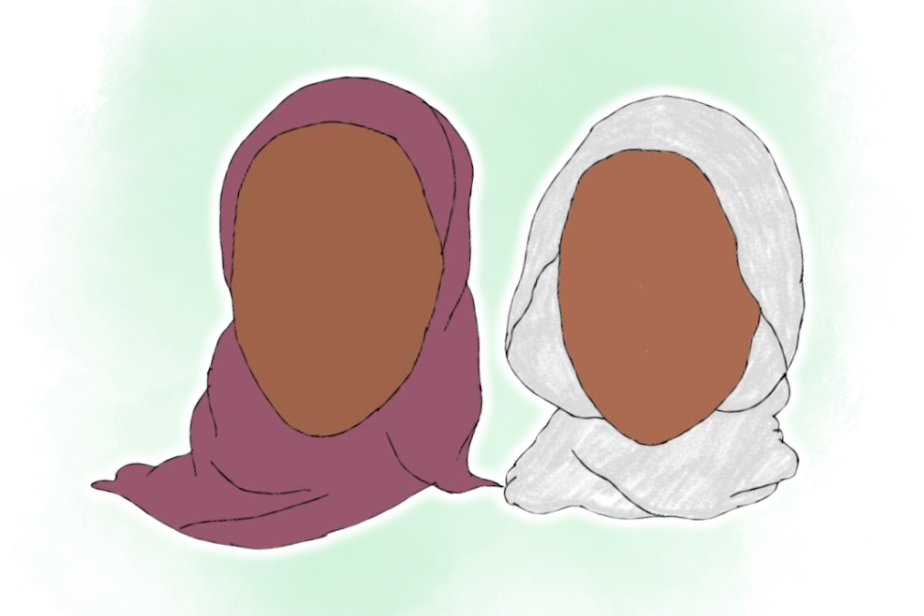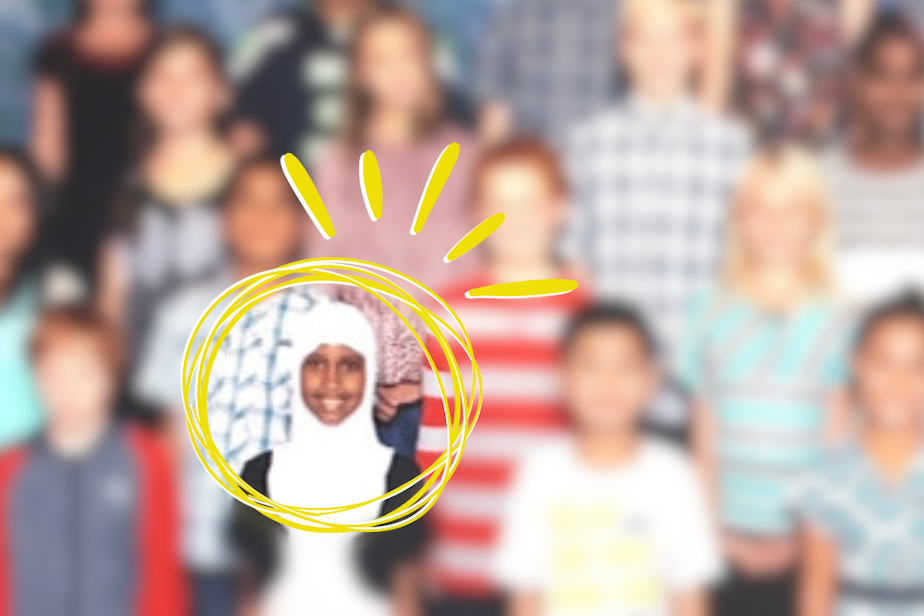'Now when I wear it I feel more proud.' How my best friend and I navigate the public school system as hijabis

Not everyone has the same relationship with their hijab. Some people feel confident wearing the hijab at a young age, and others are still on that journey.
For this personal essay, RadioActive’s Jehan Hashi talked to her best friend, A, about how they both found power and freedom in wearing their hijabs.
[RadioActive Youth Media is KUOW’s radio journalism and audio storytelling program for young people. This story was entirely youth-produced, from the writing to the audio editing.]
E
very public school student knows about picture day anxiety. What am I gonna wear? How’s my hair? How do I look?
But for some students, like my friend A, picture day includes an added layer of anxiety. (A agreed to share her experiences with me on the condition that we only publish her first initial, citing concerns for her privacy.)
A remembers our fourth grade picture day at Marvista Elementary in Normandy Park. She remembers wearing a bright purple hijab and standing in the back row for the class photo. I was in the same class as A, and I remember that picture day too. I was wearing my white hijab to match my black and white Eid dress. We both had our hair done.
Sponsored

Sponsored
"I had braids," A remembered. "And when you wear the hijab, it's gonna have bumps — it's not going to be smooth — if you have a hairstyle under the hijab. I remember this kid pointed it out. He was like, 'Why do you look like a bear?' He said [the braids under my hijab] looked like ears."
A laughs now looking back at that moment. But, she says, after her classmate's comment, "a whole wave of insecurity" hit her.
"I didn't want to take my pictures anymore," she said.
A few years later, when A moved to a new school in Bellevue, her classmates' comments about her hijab became more targeted. And they began focusing on her Muslim identity.
Sponsored
"I remember this one instance in math class," A said. "Our teacher was teaching a lesson and this white guy behind us tapped my partner and was like, 'Ask her if she's a part of ISIS.'"
In my school district, Highline, nearly 15% of the student population is Black or African-American. In A’s school district, Bellevue, just under 4% of the student population is Black.
"I kind of got culture shock [after moving to the Bellevue School District] because no one looked like me," A said. "There were no Somali people. There were no visibly Muslim people at all."
This difference in diversity led us to have completely opposite experiences in school.
After Marvista Elementary, I went to Pacific Middle School where my friend group was very diverse and included many other hijabis. I was able to look around and see people who looked like I did. That became my source of confidence.
Sponsored
A, on the other hand, had to really seek out her community by joining clubs like the Black Student Union. Over the years, A moved around school districts, and wherever she went, she sought out community.
"After I moved back to Seattle, it helped me because there were more Muslim people in our neighborhood," A said. "I feel like that really did help me with my identity at the time."
While A and I both had distinct journeys to finding self-confidence in our hijabs, community played a significant role in our discovery. Being friends with A over the years — and seeing how our experiences differed since elementary school — showed me how impactful our surroundings were.
Community helped me acknowledge my differences, and it created a safer space for A. Community helped us get to the point where we are today, both secure and comfortable in our hijabi identity.
"Now when I wear [the hijab], I feel more proud," A said. "Every time I step out, people know. It's a symbol of being a Muslim woman. And I feel like it's such a powerful statement."
Sponsored
A says that her hijab represents modesty and freedom of choice. To me, the hijab represents the women in my life who wore their own hijabs with their heads held high, embodying everything I dream of.
This story was produced in a RadioActive Youth Media introductory workshop for high school-age youth. Production assistance by Nina Tran. Edited by Ruby De Luna. Prepared for the web by Kelsey Kupferer.
Find RadioActive on Instagram, TikTok, YouTube and Facebook, and on the "RadioActive" podcast.
Support for KUOW's RadioActive comes from the Bill & Melinda Gates Foundation Discovery Center and BECU.



